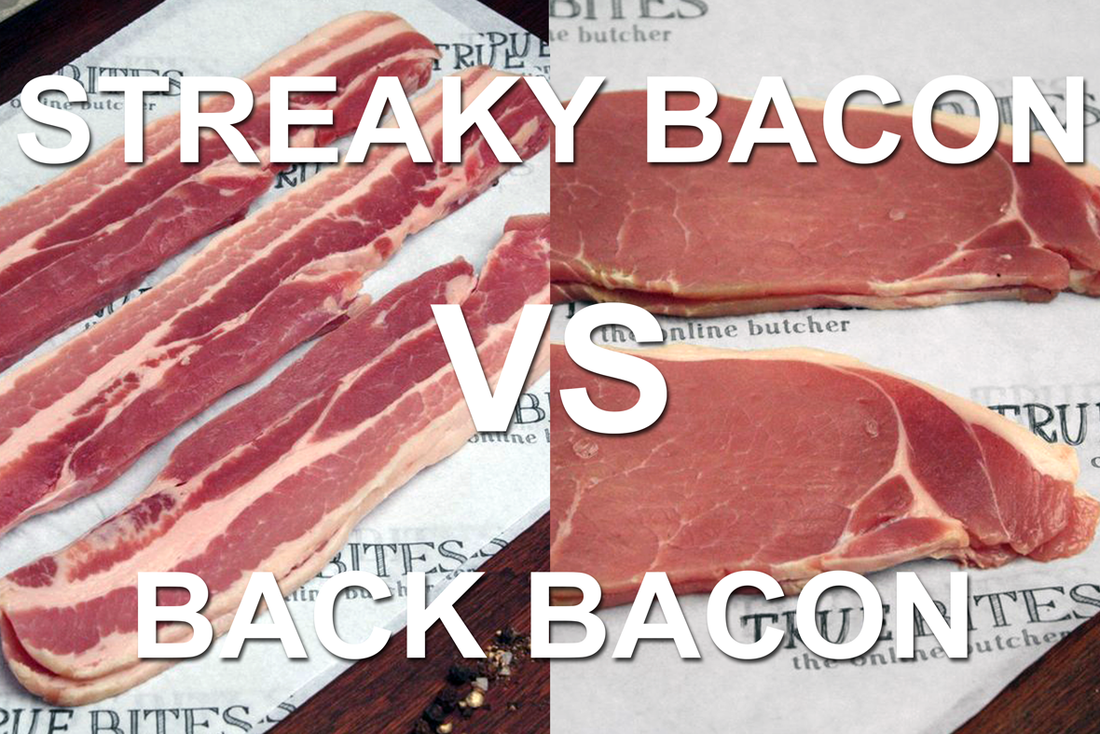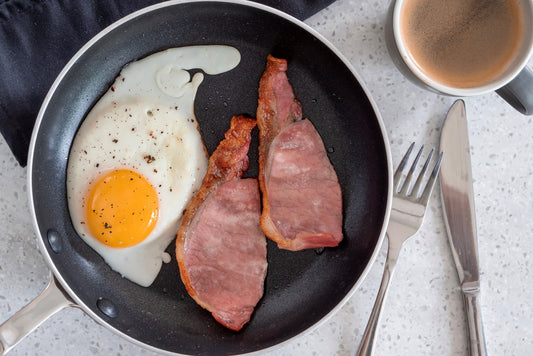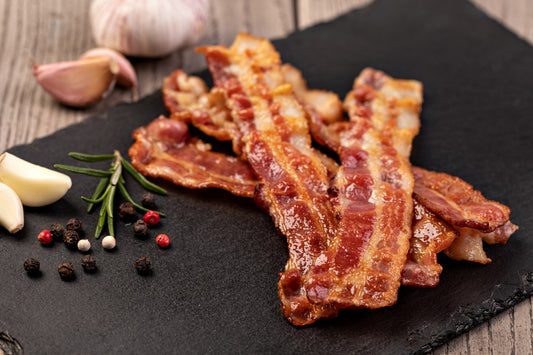There are actually quite a few different types of bacon, which we'll address in a future article, but the two most popular here in the U.K. are definitely back bacon and streaky bacon. So, what exactly is the difference between the two? Let's take a look...
Bacon
Firstly, let me very briefly explain what bacon is. Bacon is produced from pork cuts that are cured (a process of preserving) using salts, or, depending on the recipe being used, a mixture of salts and sugars. The pork is then left to cure for a number of days, or even up to a week, allowing the ingredients to develop and the salt (via osmosis) to penetrate the meat. The length of time a cut takes to cure really depends on the cut of pork being used, or the size of the cut. Basically the bigger the cut of pork being cured, the longer it will take to cure it. Once the pork is fully cured, it can be classed as bacon.
Back Bacon

Back bacon is by far and away our most popular bacon. This is the stuff you'll be having on your local cafe breakfasts and sandwiches. It's produced from pork loin, is usually very lean, particularly the eye of the loin, and shaped almost like an apostrophe. It's basically the perfect bacon for on a plated breakfast.
Streaky Bacon

Streaky bacon is often the bacon enthusiast's bacon of choice. This is the bacon you wrap around your sausages at Christmas to make Pig's in Blankets. It's produced the same way as back bacon except it's produced using pork belly instead of pork loin. Streaky bacon carries a fair bit of fat and is shaped more like a ruler, hence is often referred to as bacon strips. It's the perfect bacon to wrap around almost any meat, drape over your Christmas turkey, or pop on a sandwich with barbecue sauce. Oh, and in my opinion, it's best served crispy.
The Difference
So, streaky bacon or back bacon, which one's best? Well, personally I like my bacon served crispy, and with a good amount of fat on, so for me it's streaky bacon. If you prefer your bacon lean, and you don't care for the fat, then back bacon is the one for you. Let's be honest, they're both bacon, so they're both going to be delicious.









5 comments
Hi There
Please advise where are you situated and is there a price list available.
Regards
Hi Wynn, the taste of UK back bacon would be closer to streaky bacon than that of baked/cooked ham, yes. Hope that helps? Thanks, Matt
I’ve read that back bacon is what Americans refer to as Canadian bacon, but I don’t think that can be quite right! Can you clear up some confusion about that? Canadian bacon is a back cut of bacon, but it tastes somewhat like a baked ham, instead of similarly to strip or streaky bacon. Does UK back bacon more closely resemble baked/smoked ham in flavor or taste more like a streaky bacon in flavor?
Hi William, As long as the bacon hasn’t been opened you will be able to go by the ‘use by’ date on the packaging. Usually bacon has a longer shelf life as it is a cured product. Thanks, Matt
Bacon put in the fridge not opened after delivery, how long can you keep it before you have use it.